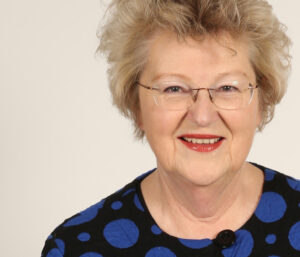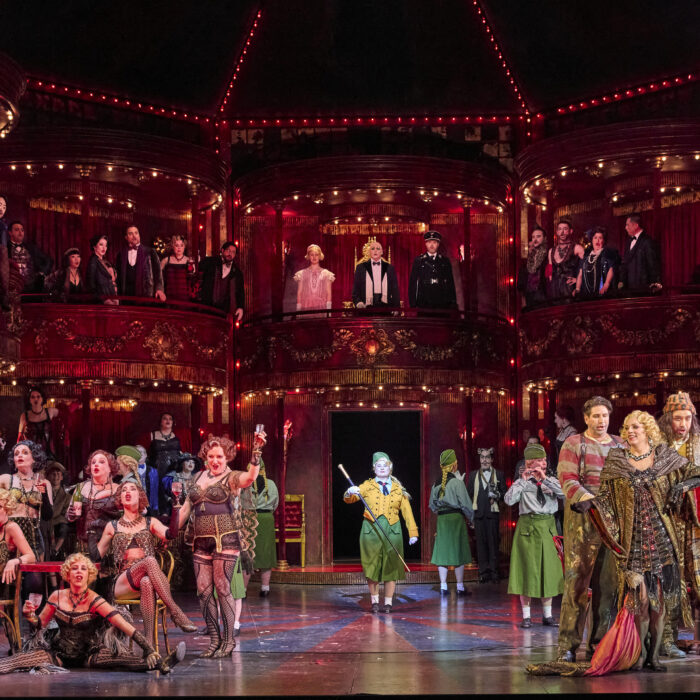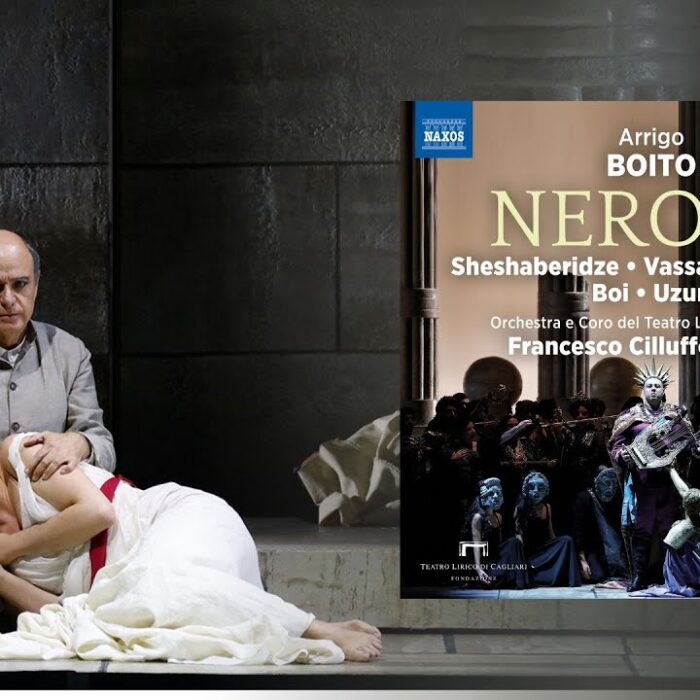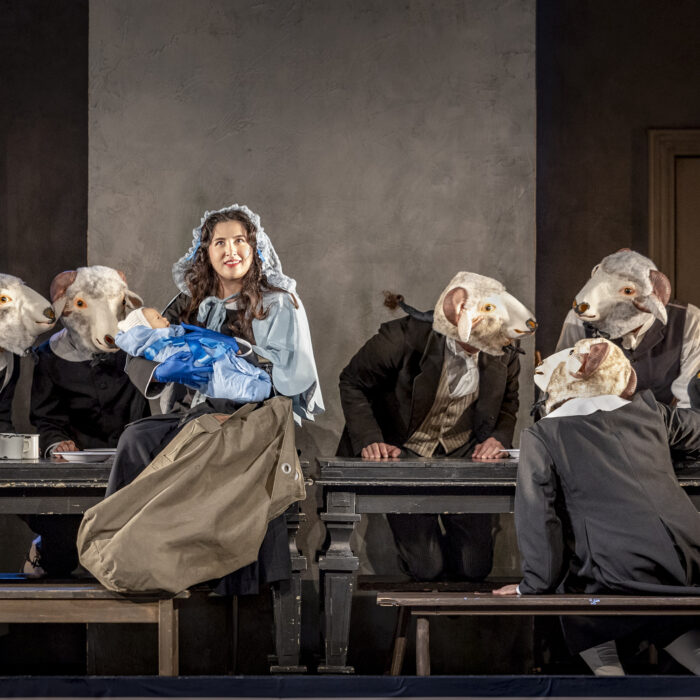
Baltic Opera Festival 2025 Review: Salome
Director Romuald Wicza-Pokojski Focuses on the Emotional Core of Strauss’s Sociopolitical Landscape
By Zenaida des Aubris(Photo: K. Mystkowski)
Now in its third year, the Baltic Opera Festival is hitting its stride, with founder and leading baritone Tomasz Konieczny omnipresent—tending to last-minute details and overseeing a courteous and attentive staff. The performances take place at the Forest Opera in Sopot, a seaside resort north of Gdańsk on the Polish Baltic coast. For many international opera lovers, this remains one of Europe’s hidden gems, awaiting wider discovery. The nearby city of Gdańsk—formerly Danzig—boasts a rich medieval heritage and is best known in recent history as the birthplace of the Solidarity movement, led by Lech Wałęsa, which played a key role in the fall of Communism in Eastern Europe.
Konieczny has given this year’s festival a unifying theme: human loneliness in the world. To express this, he selected Strauss’s “Salome,” a work that—though rooted in biblical narrative—plumbs the psychological depths of isolation, obsession, and spiritual disintegration. “Salome,” the one-act opera composed by Richard Strauss in 1905, based on the play by Oscar Wilde and with a libretto written by Strauss himself. Set in King Herod’s palace in Judea, the opera recounts the biblical story of Princess Salome, who mesmerizes Herod with the infamous Dance of the Seven Veils in exchange for the head of John the Baptist (Jochanaan in the opera). The work is notable for its expressionist musical language, lush orchestration, and intense emotional and psychological depth. Premiered on December 9, 1905, in Dresden, “Salome” caused an immediate scandal with its daring themes and eroticism, yet it quickly gained recognition as one of the seminal masterpieces of 20th-century opera.
Director Romuald Wicza-Pokojski strips the piece of its historical context, relocating it to a stylized, modern-day setting. Designer Boris Kudlička frames the stage with real trees, evoking an uncanny forest that sets the tone for a universal parable. The drama could unfold in any sociopolitical landscape where the pathology of power, repression, and desire rears its head. Subtle allusions to the Israeli-Palestinian conflict appear: to the right, soldiers idle listlessly, playing cards; to the left, a group resembling Palestinian refugees huddle together, sometimes unfurling a banner reading “Free Jochanaan.” Suspended above the stage is a translucent cage—Salome’s realm—where she drifts among her handmaidens, absorbed in teenage activities.
Despite the political subtext, Wicza-Pokojski maintains his focus on the opera’s emotional core. Gerhard Siegel portrays Herod as a corrupt, lecherous tyrant, his incisive tenor slicing through the night air. Claudia Mahnke lends Herodias an imperious coolness, her phrasing precise and theatrically charged. As Salome, Jennifer Holloway gains vocal assurance as the evening progresses, her soprano deepening in color and intensity, culminating in a chillingly sensual climax as she kisses Jochanaan’s severed head. The infamous Dance of the Seven Veils is here reimagined as a disturbing act of emotional masturbation: Salome, fully dressed in a long, virginal white coat, languidly paces before Herod, who barely acknowledges her, his lust outsourced to gold-clad assistants writhing around him.
Jochanaan, no longer a prophetic ascetic but a filthy, caged outcast, is paraded before the court like a stray animal. Oleksandr Pushniak, though somewhat lost in the open acoustics, brings a resonant, grave dignity to the role. His defiance is met not with reverence, but with violence—guards prod him with electrified rods. The opera’s climax is stark and effective: Herod grants Salome her wish, and then orders her death—by taser. Among the smaller roles, Omer Kobiljak stands out, his elegant tenor giving Narraboth unexpected nobility and poignancy.
Yoel Gamzou, conducting the superb Sinfonia Varsovia, draws out the full range of Strauss’s volatile score. From the subdued prelude to the feverish climaxes, Gamzou navigates the expressionist idiom with fluid command, emphasizing the exoticism and psychological unease embedded in the music. The outdoor acoustics—remarkable for an open-sided venue—require no electronic amplification, and the orchestral balance remains impressively clear.
This “Salome” may not have been a traditional or flawless production in operatic terms, but it succeeded in illuminating the opera’s core: the collision of desire, power, and humiliation. It left the audience with the disturbing recognition that these forces remain timeless—and terrifyingly human.

(Photo: K. Mystkowski)



